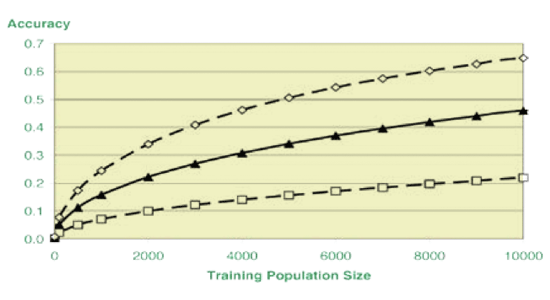



Advancing Genomic Selection
Genomic selection supplements the traditional method of genetic evaluation with information on the DNA of an animal to improve the accuracy of identifying genetically elite animals. Noirin McHugh and Donagh Berry from Teagasc say that greater gains can be achieved by applying genomic selection to females as well as males.Uptake of Genomic Selection in Ireland
Since its initial launch in 2009 the uptake of genomic selection in Ireland has been strong. In 2009 genomically selected (GS) bulls accounted for 34 per cent of the total AI straws sold in Ireland; 2010 saw this figure increase further to 40 per cent. One of the main reasons for the rapid adoption of this technology by Irish dairy farmers is the greater EBI of the GS bulls (€218 in 2010) compared to the Irish daughter proven bulls (€146 in 2010).
The reliability of available young bulls increased from 32 per cent prior to genomic selection to 54 per cent with genomic selection. Although the reliability of the GS bulls is lower than for most Irish proven bulls, the associated increase in the ebI of the Gs bulls has seen a strong uptake among Irish farmers. However, as the reliability of the GS bulls remains relatively low, farmers are adhering to the advice given and using an average of four Gs bulls per herd to spread their risk.
Advances In Genomic Selection in Ireland
Fundamental to generating a benefit from genomic selection, is knowledge on the DNA profile most suited to Ireland. A population of Irish proven animals, commonly known as a training population, is used to relate the DNA profile of the individual animals to their genetic merit for the array of traits evaluated by the ICBF.
As Figure 1 shows the greater the size and the more diverse the DNA profiles contained within the training population the greater will be the benefit in accuracy from using genomics. Through international collaboration, the training population in Ireland has more than quadrupled from 945 domestically proven animals in 2009 to 4,196 in 2011.
This training population size is still lower than in some countries and is reflected in lower increases in reliabilities from genomic selection. When genomic selection was initially launched in 2009 the service was only available for animals that were at least 50 per cent Holstein due to the small size of the training population for Friesians.
Genomic selection, however, is now available for Friesians. other recent advances include the development of genomic selection for linear type traits; initial results show an increase in the reliability of the type traits by approximately 10 percentage units.
Genomic Selection on Farm
Genomic selection is now available to all dairy farmers. ICBF provide two genotyping services: the low density “3k” (i.e. 2,900 markers) platform or the normal density “50k” (54,001 markers) panel. because animals inherit large chunks of their dna from their parents, animals that have both their sire and maternal grandsire genotypes in the ICBF database (now 9,000 genotypes) can avail of the lower-cost 3k genotype service; while other animals can avail of the 50k genotype service; the cost of each service is €50 and €99, respectively. Farmers can log onto the ICBF website and see which animals can avail of the lower cost service.
Figure 1. Effect of training population size on accuracy of genetic evaluations using cows with data on fertility (-□-), calving (-▲-), and production (-◊-) traits

The Use of Females To Exploit Genomic Selection
To date the focus of genomic selection has been on the male side; however, the female has an increasingly important role to play. Studies have shown that the genotyping of females can substantially increase the size of the training population thereby improving the accuracy of the genomic ebIs. The genotyping of females can potentially result in a three fold increase in the rate of genetic gain. An economic analysis con irms that genotyping females can result in very high rates of return on the investment.
Although genomic selection has progressed rapidly since its inception, there are still many other areas where further gains can be made. Our continued role in international collaborations ensures that Ireland remains at the forefront of this cutting edge technology.
The swapping of genotypes with international partners ensures that the training population will continue to grow thereby increasing the reliability of our genomic EBIs. Access to more DNA markers may increase genetic gain further and expedite its application to multiple breeds.
Conclusion
The success of genomic selection has been due to the support and involvement of the entire industry, from research carried out by Teagasc, its implementation by the ICbF, the investment in infrastructure at Weatherbys to generate the DNA Profile, and the large uptake by dairy farmers. Teagasc and the ICBF will continue to work closely with the industry to further enhance genomic selection and ensure that the benefits are realised at farm level.
October 2011

